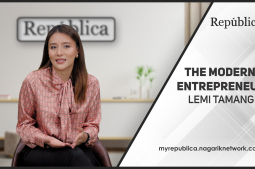'Ramailo Games' promotes local content and family games
1 year ago
Sr. correspondent at Republica.
KATHMANDU
Anisha Maharjan is the first winner of ‘Dopper Changemaker' that was held in 2019. Dopper Changemaker 2019 in Nepal was about supporting students to implement their thesis or graduation project on two major environmental issues: water and/or plastic pollution.
Among 250 applicants, her graduating research topic 'Mapping and finding solution to urban flooding problem of Kathmandu Valley', won her the title ‘Dopper Changemaker 2019’ along with a cash prize of $2000.
She invested the cash in her research and with the assistance from Urban Environment Management Society invested it to build rechargeable well in Patan for 10 households. Her project was completed in December 2019.
Now, a Master’s degree holder of Environmental Science, she is the cofounder of Kuval, which is yet to be run in full-fledged. According to her, she found her life’s path after the competition and she is committed to work to solve the urban flood problem through research, demonstration and policy advocacy.
Unplanned urbanization and encroachment of land at riversides have resulted in urban flooding. Renewable wells are one of the solutions for decreasing the effect of urban flooding along with creating the opportunity to get water. She adds, “In today’s context, we are facing urban pluvial floods and the reason is not the nature but humans. The roads are all concrete or cemented where agricultural lands have turned into settlements, and then there is encroachment of land at riversides, which all are human factors for urban pluvial floods.”
This eventually led the rainwater to flow instead of sipped in the earth. And rechargeable well comes in action at this point, where it is completely opposite to the traditional well. She explains, “We pull out water from traditional well but rechargeable well is just the opposite of it. We collect the rainwater that goes through certain treatment process, and then it can be used. This helps to sustain the water resource for long term and sustainability is necessary.”


- by Sangita Shrestha

- by Sangita Shrestha

- by Sangita Shrestha
Leave A Comment